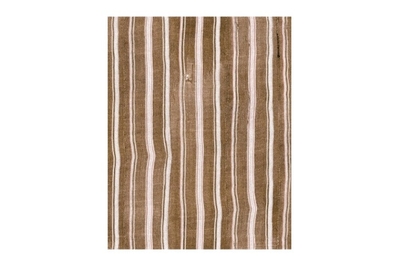Who Needs Walls? Here’s How to Make One Room Into Many
Color can also be a powerful tool to define areas in a small room without introducing physical divisions, said Thomas Pellerin and Marion Richard, architects with Parisian firm Studio Bravo, in an email interview.
You can achieve this effect by painting a wall or two — or even a ceiling — in their own hue. (There’s a term for a bold version of this: color drenching, or the practice of covering an entire zone, from walls to baseboards to ceilings, in a single color.)
You can achieve a similar effect with wallpaper. “Every space, no matter how big or small, deserves to have a special moment,” small-space interior designer Shavonda Gardner said when we interviewed her for our guide to removable wallpapers. Pattern and color can have a big impact in tighter spaces such as hallways or mudrooms, she said, “particularly because those spaces get neglected.”
Designers (and old friends of mine) General and Cristina Casañas-Judd of Me and General Design know about small-space living: They raised their two daughters in an 1,100-square-foot Brooklyn apartment. Frequent entertainers, they took an otherwise underutilized nook in their home and transformed it into a bar area by lining the small cutout space in contrasting graphic wallpaper.

Like wallpaper or paint, wall texture and material can help delineate spaces. Designer and author Oyin Antwi has attached wooden panels to the wall in several projects featured in her book Helping You Love Your Space, No Matter the Size. These sorts of slats are versatile (they come in a variety of colors from light wood to walnut to gray), widely available (from retailers such as Home Depot and Wayfair), and suitable for multiple uses, whether as a corner dining moment or on opposing walls of a living room zone.

But you don’t have to spring for pricey paper or crack open a can of Benjamin Moore. You can also group decor, books, and other items you already have to create, say, a blue zone, a green corner, or a neutral area. Subtle, intentional decorating choices like this can give a small space personality as well as a sense of order.
Employing some of these strategies can help even a small, multifunctional room feel intentional and more relaxing. If you’re working from home, designating a work zone distinct from off-work areas may improve that ever-elusive work-life balance. And when you’re living with others, having established zones can reduce the feeling of being on top of one another. Using design techniques to organize your space can help you flourish — even within the smallest footprint.
This article was edited by Maxine Builder, Catherine Kast, and Katie Okamoto. Katie Okamoto contributed reporting.








